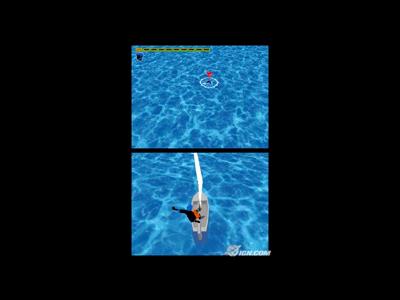
This is another level. Your girlfriend is in danger in the sea, and you have to sail over to fetch her. You sail over by blowing at the screen to propel your boat by the wind. It’s a fantastic interface. But the bit that I really like is the final level.
After a few very tense levels of lots of fast jabbing at the screen, it all slows down. You’ve won your girl back from the monster, you think you’ve won the game, you’ve beaten the big boss, you’re exhilarated and relieved… but your girlfriend dies. You have to bring her back to life with heart massage and mouth-to-mouth.
The level jumps between three actions, each lasting a few seconds: tapping the screen gently at the same beat as her heart, tapping the screen madly to scare Death away, and blowing onto the screen at the rate of the girl’s breath.
The breaths are repeated so you can’t just take one big breath and let it out in little puffs: you have to synchronise your own breath with the rate on screen. Then the breathing rate you have to do increases, and suddenly the game is making you breathe faster—and you have to hold your head really close to the screen for the entire subgame, just incase it jumps from a heart tapping to breathing action.
The level, while simple, suddenly becomes ultra immersive and physically adrenalising, your body responding to your faster breathing by getting exciting! It’s a gameplay trick to influence your perception of the narrative as clever as loud sounds and flashing lights in a movie to hype you up, and it’s woven into the story perfectly.
You end up out of breath, and physically excited. It’s artificial, yes, but totally appropriate to the game-play.
Incidentally, I don’t think these interfaces are too weird. In 30 years time, when our fingers have stopped working because we’ve been using keyboards all our lives, and our eyes are broken from too much TV in the dark, we won’t be able to use remote controls. We’ll need interfaces that work by waving and bumping and blowing. These games are the training ground for the future.